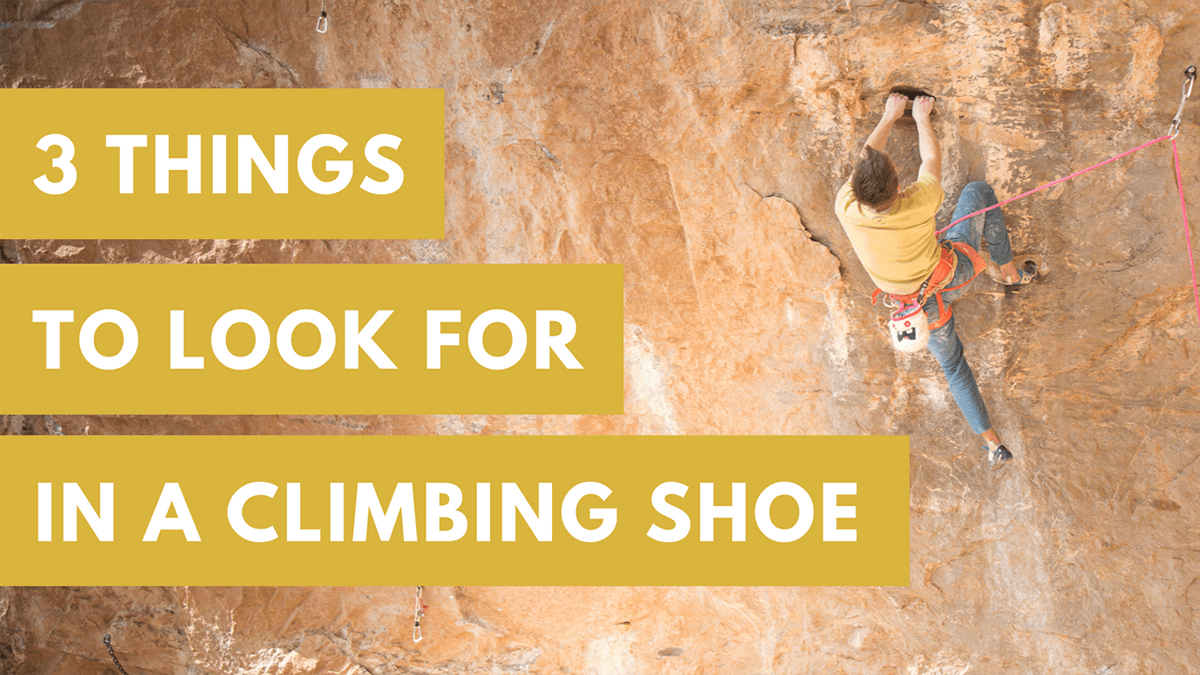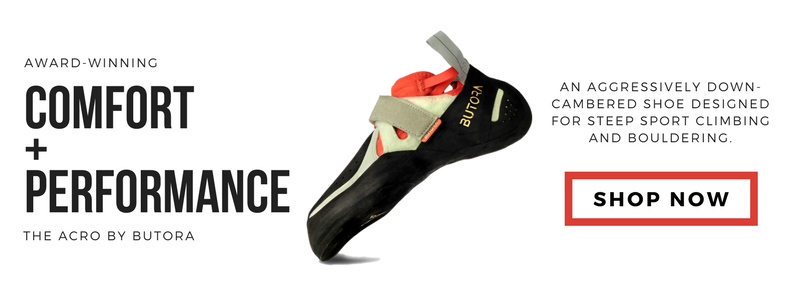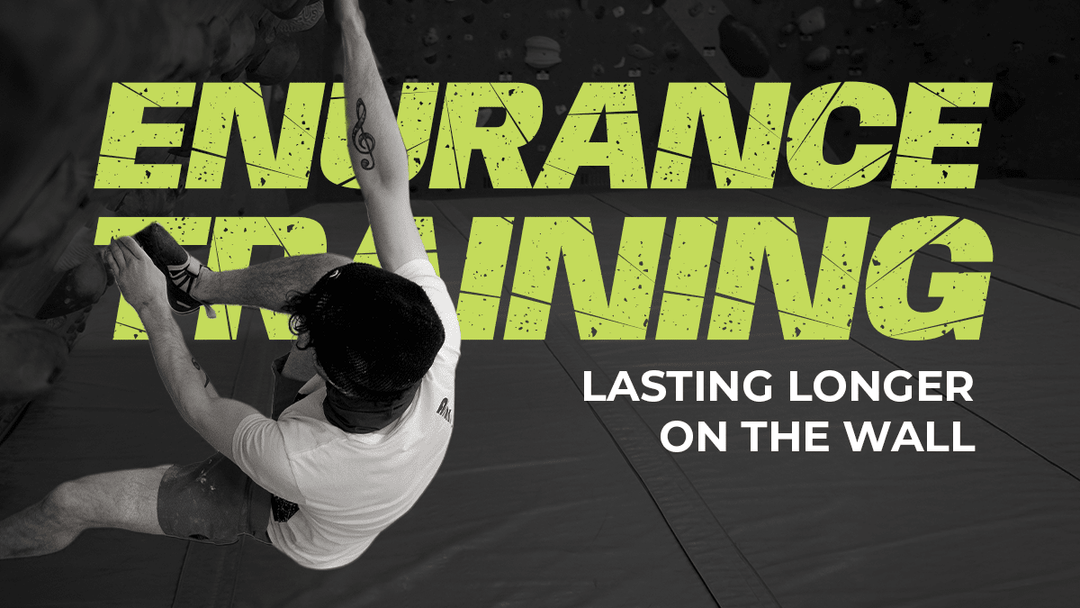3 Things to Look for in a Climbing Shoe

Suppose you're in the market for a new climbing shoe. You're probably reading this article because you're researching before investing in a new pair. While reading individual shoe reviews about another climber's test drive is helpful, every shoe, foot, and individual's climbing needs differ. Whether new to climbing or frustrated after making a few bad purchases, this article points you in the right direction to choose the best shoe for you.
When you're on the lookout for the perfect climbing shoe, it's not just about comfort, it's about enhancing your performance. Consider the type of climbing you'll be doing most—bouldering, sport climbing, or traditional (trad) climbing—as each style may require different support or flexibility. The right shoe can make all the difference in your climbing experience, so keep reading to discover what makes a climbing shoe great and how to find the one that feels like it was made just for you.
Here are 3 things to look for in a climbing shoe
1. Above all else, buy shoes that fit.
Over the years, our collective experience of using different brands and types of shoes showed us that every shoe brand (in addition to the model) fits differently. At Butora, we've sought to be the company that offers various fits, ranging from narrow to regular to wide: Fit is that important.
You may be drawn to a particular shoe because of its looks. Your friends swear by that brand, or its rubber is stickier than others. But what uses are any of these things if your shoe doesn't fit properly? Will that aggressive down-turned-toe do you any good if the heel pops off every time you do a heel hook? Will that excellent shoe design soothe you when your toes scream after climbing your second pitch in your too-tight shoes?
While extra features are excellent, they cannot make up for a good fit. And quite frankly, plenty of people can climb 5.12 or harder with "beginner" shoes! You won't see Chris Sharma take a fall because he didn't have his Shamans on. Likewise, you won't climb like Chris Sharma just because you're wearing his Shamans.
Remember, comfort is king. When you're halfway up a climb, and your focus should be on your next move, the last thing you want is to be distracted by pinching or sliding shoes. A well-fitting shoe becomes an extension of your body, allowing you to feel the rock and move with precision.
Don't get caught up in the hype. It's easy to think that the more expensive or advanced a shoe is, the better it will perform. But the truth is, a shoe that fits poorly won't just hold you back—it could also lead to injuries. Your feet are your foundation. If they aren't happy, neither are you.
So, take the time to try on different sizes and styles. Pay attention to how each pair feels on your feet. Are there any pressure points? Do your toes have enough room to wiggle? Can you walk around comfortably? These are all crucial questions to ask before making a purchase.
In the end, the best climbing shoe for you is the one that fits so well you barely notice it's there. That's the shoe that will help you push your limits and enjoy every moment on the wall.
So, what constitutes a good fit? Here are things to look for:
- A climbing shoe should be snug.
- There are no air pockets in the heel or midfoot.
- The toes are not too tight. REI and climbing shops like ours often have a rock wall where you can test shoes on. Use it. Your toes will thank you in the end.
- For a better custom fit, look for laces, webbing, and straps that go both ways (one that tightens right-left and one that draws left-right like with our Endeavor).
- You've accounted for stretch. Synthetic materials will barely stretch, while leather will stretch over time.
- If you're a guy with narrow or low-volume feet, be bold about sporting some women's climbing shoes (and vice versa). Women's shoes tend to have a lower ankle and heel area. They also tend to come in pink, lavender, and teal. But who cares about the girly colors if you're a dude and the women's fit works better for you?
2. Durability.
Durability is crucial if you're on a budget and don't feel like dropping money on a new pair of shoes every few months. There are two main issues regarding durability: how long the climbing shoe rubber lasts and how long the lace or strap system lasts.

When you're on the beginner end of climbing, your footwork is probably less precise, translating to more significant wear and tear on the shoe rubber. In such a case, a pair of thin-soled shoes that promise a better toe to feel on the rock is probably more conducive to a blown-out toe and wasted money than performance. We'd rather see beginners in something like our Blue Senegi or Habara Picante, which we designed for durability without sacrificing performance.
Conversely, pulling tabs, laces, and straps can wear out even faster than the rubber when you're more advanced at climbing. For instance, with crack climbing, laces or straps will rub against the wall and wear out accordingly. In such a case, look for an enclosed toe lace-up system that protects laces from abrasion.
Moreover, it's not just the soles and fastening systems that need to be tough. The upper material of the climbing shoe also plays a significant role in how long your shoes will last. Synthetic materials tend to hold their shape and withstand the demands of climbing better than natural fibers, which can stretch out over time.
When considering durability, also consider the shoe's construction. A well-built shoe with reinforced areas prone to high wear, like the toe and heel, can extend the life of your footwear considerably. Our Habara Picante model, for example, features additional rubber on the toe box for this very reason.
Lastly, don't overlook the importance of proper care for your climbing shoes. Keeping them clean and dry, avoiding unnecessary exposure to heat, and using them only for climbing can go a long way in preserving their lifespan. Remember, investing a bit more upfront for a durable pair of shoes can save you money and hassle in the long run.
3. Climbing style.
This parameter requires you to consider what type of climbing you will use your shoes for: gym climbing, bouldering, steep sports climbing, multi-pitch, or trad? Choosing a shoe for these different climbing styles is all about balancing comfort versus performance.

An excellent all-around performance shoe should suffice for the gym. Micro footholds are non-existent in the gym, so performance is not as much of an issue as on the rock.
You will want to opt for a high-performance shoe for advanced bouldering and steep sports climbing. Look for a down-turned toe with sufficient toe coverage for toe hooking, a technique where you use the front of your shoe to grip a hold. A molded heel cup with a higher heel will prevent heel slippage and pain during heel hooks, a technique where you use the back of your shoe to grip a hold. You'd also opt for a tighter fit since foot placement and edging need to be more precise (think ballerina).
For multi-pitch or trad climbing, where you might be on your feet for extended periods, comfort becomes a key factor. You'll want a shoe that offers a snug fit but not so tight that it causes discomfort over time. Look for shoes with a flatter profile and stiffer soles to provide support and reduce foot fatigue. A padded tongue and adjustable closure system can also enhance comfort, especially when you're in the shoes for several hours.
When you're gearing up for multi-pitch climbs, it's essential to strike the right balance between a snug fit and the ability to wear your shoes for extended periods. Our Endeavor line, with its memory foam, is designed to cradle your feet in comfort without sacrificing grip or precision. This makes them an excellent choice for sporty routes that keep you on the wall all day.
For traditional (trad) climbing, where nuanced footwork and crack techniques are key, our Altura lace-ups are a game-changer. They offer a customizable fit that adapts to your foot's shape, providing support and stability. The added padding and raised ankles serve as a shield for your feet, offering protection when jamming into cracks.
While aggressive, downturned-toe shoes are often favored for their technical advantages on steep terrain, they might not be the best companion for long multi-pitch outings. If worn for too long, they can lead to discomfort. If you do opt for these, remember to give your feet a break at belay stations to prevent unnecessary pain. Comfort can make or break your climb, so choose wisely to ensure your focus remains on the route ahead, not on aching toes.
Remember, the rubber on your climbing shoes also plays a role. Softer rubber will give you a better grip on smears and slabs, which is great for gym climbing and some outdoor slab routes. However, it tends to wear out faster. On the other hand, harder rubber will last longer and is often preferred for edging on tiny holds, common in outdoor sports climbing and bouldering.
Lastly, consider the closure system of the shoe—lace-ups, Velcro straps, or slip-ons. Lace-ups offer the most customizable fit, which can be adjusted throughout the day as your feet swell. Velcro straps provide convenience for quick on and off, ideal for bouldering where you might frequently slip your shoes on and off between attempts. Slip-ons (or slippers) are the easiest to put on and take off and can be quite comfortable, but they may not offer the same level of precision as the other two options.
You should choose your climbing shoes based on the type of climbing you'll do most often, balancing performance with comfort. Don't forget to try them on before buying, as the best shoe for you is the one that fits your unique foot shape and climbing style.
The Best Choice
If you're seeking guidance on which shoe to purchase or have additional questions about Butora brand climbing shoes, we encourage you to reach out to us. Drawing from over 20 years of experience in manufacturing, design, and the climbing shoe industry, our team is well-equipped to provide you with helpful direction.






